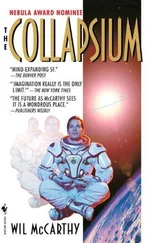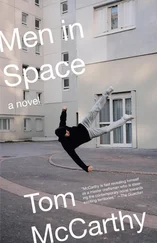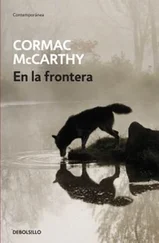“Yes,” Naz said. “It’s an excellent term. Marching in files.”
“A defile in time,” I said. “A kink.”
“That too,” said Naz.
“What’s that?” asked Samuels.
I turned to him and said:
“You’re hired.”
Over the next few days we sent people round town looking for banks for us to model our re-enactment on. They were told to pay particular attention to access and escape routes. Corners were considered good spots. Main roads tend to be trafficky, which will slow police cars down. Side roads are small enough to be blocked to prevent your being pursued, and often lead off into mazy streets of residential areas, giving you lots of options. Proximity to police stations is, obviously, undesirable. I had double the number of people search for banks as had searched for my building some months back. Their reports were gathered back at Naz’s headquarters in the blue-and-white building near mine, their findings pinned up on maps and laid out in charts and tables which, needless to say, I entirely ignored.
I found the bank myself, of course. It was in Chiswick, not far from the river. I opened an account there. I put a quarter of a million pounds in it, and was immediately invited to a meeting with the manager. I found reasons to drop in-making deposits and withdrawals, picking up cards, returning forms and so on-almost daily for a week. I had Samuels, Annie and Frank open accounts and had them visit frequently as well, to allow them to familiarize themselves with the bank’s layout. Naz had someone look up the firm of architects that had converted the building and procure a copy of the plans so that we’d get the measurements and dimensions right when we reconstructed the interior. It had a partially carpeted stone floor: I told Frank to memorize not only the floor’s pattern, but also any stains or cracks this and the carpet had on them. Annie bought a hidden camera from a spying-equipment shop in Mayfair and photographed the walls-their notices and posters, where these had been stuck, the little tears or dog-ears they had in them-so that these, just like the space itself, could be replicated accurately.
Constructing the duplicate bank inside the Heathrow warehouse took two weeks. I’d had the tyre and cascading blue-goop loop closed down and the replicated shop and café stripped out soon after I’d decided to do the re-enactment of my giving instructions to my killers, which I’d then abandoned as soon as I’d decided on the bank heist one; but we kept two of the drivers who’d taken my role in the blue-goop tyre re-enactment-one to re-enact the driver of the vehicles in which we, the robber re-enactors, would approach and exit the scene and one to drive the security van that would arrive to collect the money we’d be stealing.
Annie had photographed the street immediately outside the bank: the kerb, its markings. There was a tiny dead-end road beside the building, just large enough for one van to park in. The security van would pull in here; we’d watched the real one do this several times. A yellow line ran all along this tiny road. When the line reached the stump where the road stopped, it curved round with the same gradient as the running track outside my building. The Council’s street painters had painted it originally at a right angle-you could still see the old, half-washed-away first layer of paint extending further towards the stump’s corners-but then they, or maybe the next ones a few years later, had changed their minds and made it curved. Someone must have decided: the painters themselves, or maybe the Chiswick Council Road Markings Committee, in closed session debate in the Town Hall. Anyway, Annie photographed this and we replicated it faithfully: the same curve, the same half-washed-away layer extending from beneath.
Samuels spent a lot of time watching the bank from outside, logging the times of the van’s visits. They vary these, he explained-but if you watch for long enough you work out the variation’s sequence and how often it repeats itself. It always did eventually, he told me. It was just a matter of patience, of waiting it out until the pattern became visible.
“I like patience,” I said. “But I noticed you haven’t been writing the times down.”
“I log it all up here,” he said, tapping his head. “That’s why they called me Elephant: because of my retentive memory.”
“I thought it was because…”
“That too,” he said. “It’s all in my book. I’ll give you a copy.”
He did, but I didn’t read it. I was too busy watching everything come together. Three weeks after our first meeting with Samuels in the Blueprint Café we were ready to start practising the re-enactment. This one needed a lot of practice. There was so much choreography involved, as Samuels had warned us. There were re-enactors for the robbers, re-enactors for the staff, for the security-van men and members of the public both inside and outside the bank: thirty-four primary re-enactors in all. This one was by far the most ambitious I’d attempted. The most complex, too, in terms of information management: the walls of Naz’s office became caked with charts: planning charts, flow charts and Venn diagrams, lists and indexes and keys to charts and indexes to lists. If I visited him there in the evenings after the practices I’d find him busy drawing up another one, or annotating one already there, or simply sitting at his desk between them all, silent, his eyes glazed-over while the whole room silently echoed with his manic whirring.
The procedure we came up with went like this: the security van would pull into the tiny stump-road beside the bank in order to deliver new cash-which was no good for stealing because it’s easily traceable-and to pick up bags of old notes, which were what we wanted. This van carried four re-enactors. Two of these men would carry the new money into the bank; a third would accompany them to the door but remain just outside, while the fourth stayed in the van. Security men do this to create linked lines of sight, from inside the bank back to the truck via the man at the door-like the way buzzards hover in long lines, each one a mile apart, so that if one sees food and goes down the ones on either side of him in the chain go down to join him and the whole chain will soon know about it.
Once inside the bank, Security Guard Re-enactors One and Two would be checked in at the far end of the counter, through a set of double doors known to employees as the “airlock” because one couldn’t be opened till the other one was closed, to an area protected by armour-plated glass. Once safely inside this area, they would hand over the new sacks to a cashier re-enactor, who’d then prepare a receipt for them while they waited for the bags of old notes, stored in vaults downstairs, to be brought to ground level in a small electric lift.
This whole transaction would take place out of view of the bank’s public area. There was one spot, though, just in front of the enquiry desk, from which it could be seen. We had an accomplice re-enactor stand in the enquiry desk queue and walk out of the bank as soon as he saw the lift carrying the old money arrive. That was what Samuels called the “showout”: the sign for the robber re-enactors to spring into action.
We’d be waiting in two cars parked one on each side of the street. The first would drive over and pull up across the entrance to the stump-road, blocking the security van in. Simultaneously three of us would run out of this and three more from the other car towards the bank. Robber Re-enactor One would throw Security Guard Re-enactor Three to the floor and take his place, holding the door ajar and setting up our own buzzard-like sight chain. Robber Re-enactors Two, Three and Four would run into the bank’s lobby and form a phalanx, Two firing the “frightener” from his shotgun at the ceiling before bringing the gun down to point at the bank staff re-enactors and telling them to move back from their counters, while Three also pointed a gun at them. Robber Re-enactors Four and Five, meanwhile, would move forward and smash the airlock’s doors with sledgehammers. Once inside the armour-glass enclosure, they’d be joined by Three, who, while Two kept his gun trained on the staff and customer re-enactors, would help them carry the bags out of the bank-three large bags, one each, held with both hands in front of the stomach-with Four eventually joining One at the door to exit behind them and escape in the two cars. The whole robbery sequence had to take no more than ninety seconds.
Читать дальше












